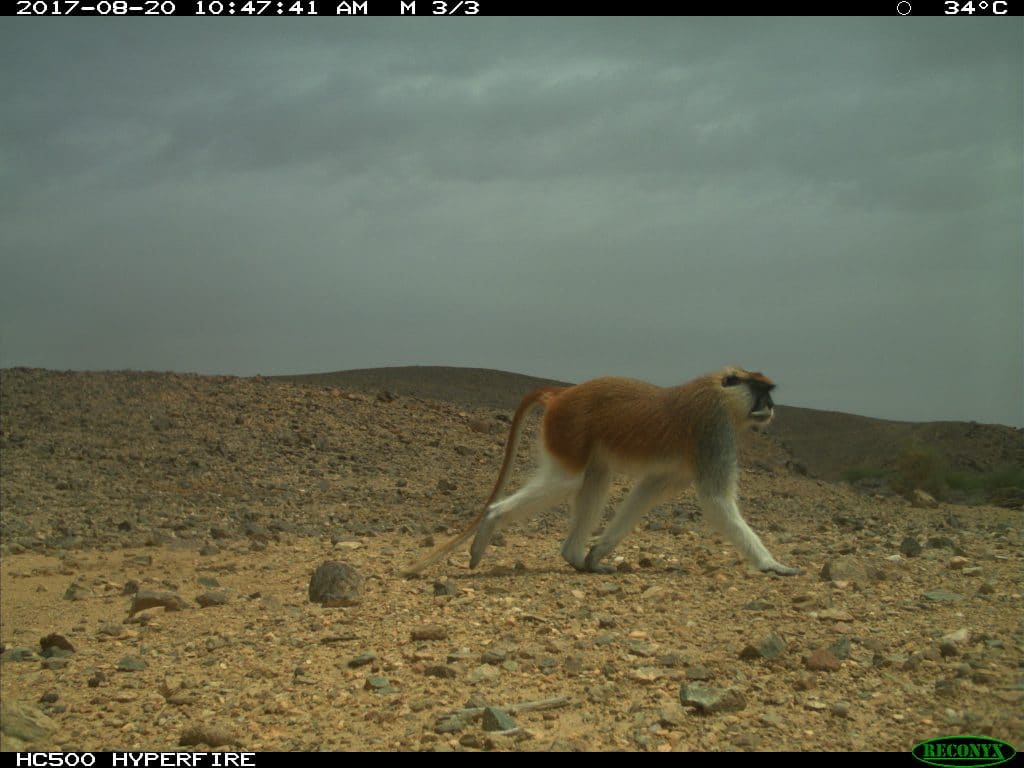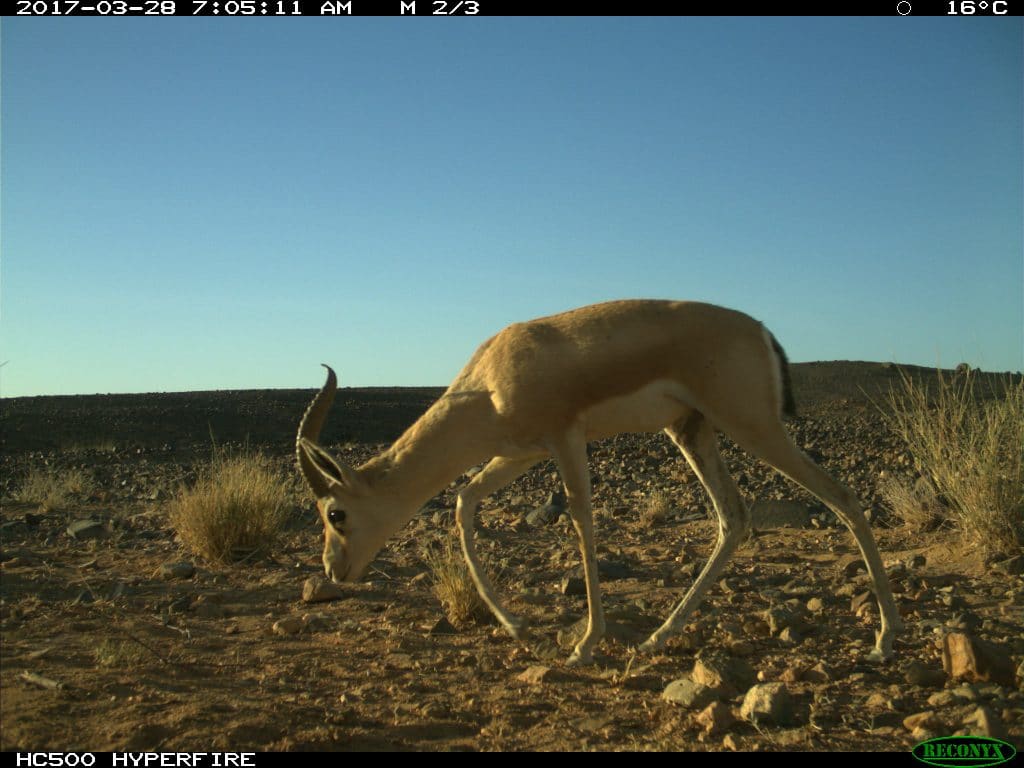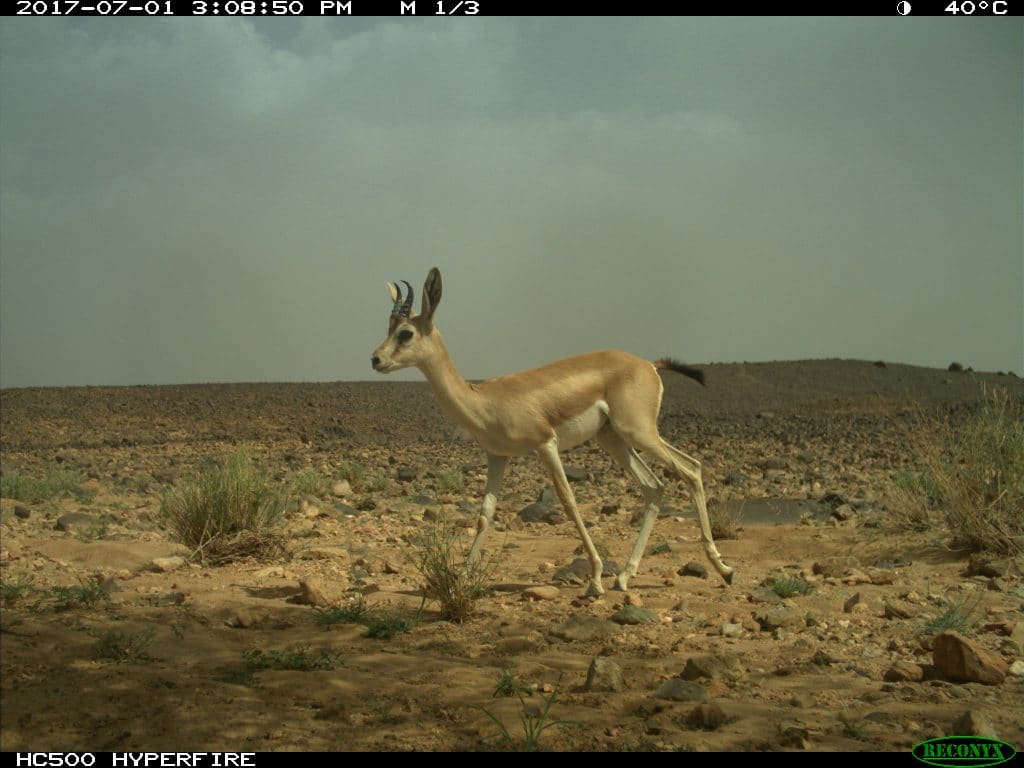Monitoring dama gazelles in northern Niger
The dama gazelle (Nanger dama) is one of the most endangered antelopes in the world with a population estimated at less than 300 individuals scattered across a handful of small isolated groups in Chad, Niger, and possibly Mali (RZSS & IUCN, 2014). This species is in the IUCN Red List as Critically Endangered (IUCN 2016), as well as in Appendix I of CITES and the Convention on Migratory Species (CMS).

The National Nature Reserve of Aïr and Ténéré (RNNAT) is located in northern Niger in the Agadez region at the very center of the Saharan zone. The reserve is home to a rich wildlife, including the dama gazelle, but this wildlife has declined significantly due to civil unrest in the region, the last one occurring from 2007 to 2010.
In order to conserve the Sahelo-Saharan fauna and this endangered species, Sahara Conservation decided to install camera traps to collect information about the presence and movements of the dama gazelle in the southern part of the reserve.
In January 2017, thirteen camera traps were installed by the SCF-Niger team in the Aïr Mountains, using the latest standardized methods to assess the relative abundance and presence of a species, through a grid divided in 4 km2 basic units. It is a large area to cover and the accidental terrain is difficult to access – a 5 to 6 day-trekking is necessary to install the set of cameras.
In 2018, after collecting the data from the camera memory cards and changing their batteries, the traps were moved (still in the Aïr Mountains), to extend the monitoring area. Within the grid, two criteria were systematically applied to identify the right spots to install the camera traps: indirect sightings (tracks and dung piles of dama gazelles) and a safe location for the cameras. A community game guard has been recruited amongst the local population to monitor the camera traps. One year later, no traps were damaged or stolen, proving the efficiency of the guard surveillance and awareness raising activities towards local communities. Other community game guards will be recruited in the near future to provide surveillance in eastern and northern parts of the mountain range and sensitize the people using the areas – mainly herders, but also gold panners. Once they are recruited, new camera traps can be installed and the monitoring area enlarged.
The SCF-Niger team has so far carried out three missions in this refuge zone for Saharan wildlife, consisting in setting up and moving the camera traps, as well as collecting their data. The main objective was to improve the knowledge on the distribution of this isolated population of Dama gazelles in northern Niger, but also to assess the occurrence of other threatened species such as the Dorcas gazelle or the Barbary sheep.

Among the species detected by the traps (other than a Patas monkey and some small carnivores such as the Rüppell’s fox or wild cat), the most abundant species are Dorcas and Dama gazelles, with a 90% presence probability at any point of the grid for the Dorcas and 60% probability for the Dama, only 30% for the Barbary sheep. These figures may vary in relation to the grid’s extension but they highlight the importance of this area for the conservation of Dama gazelle in the wild.




